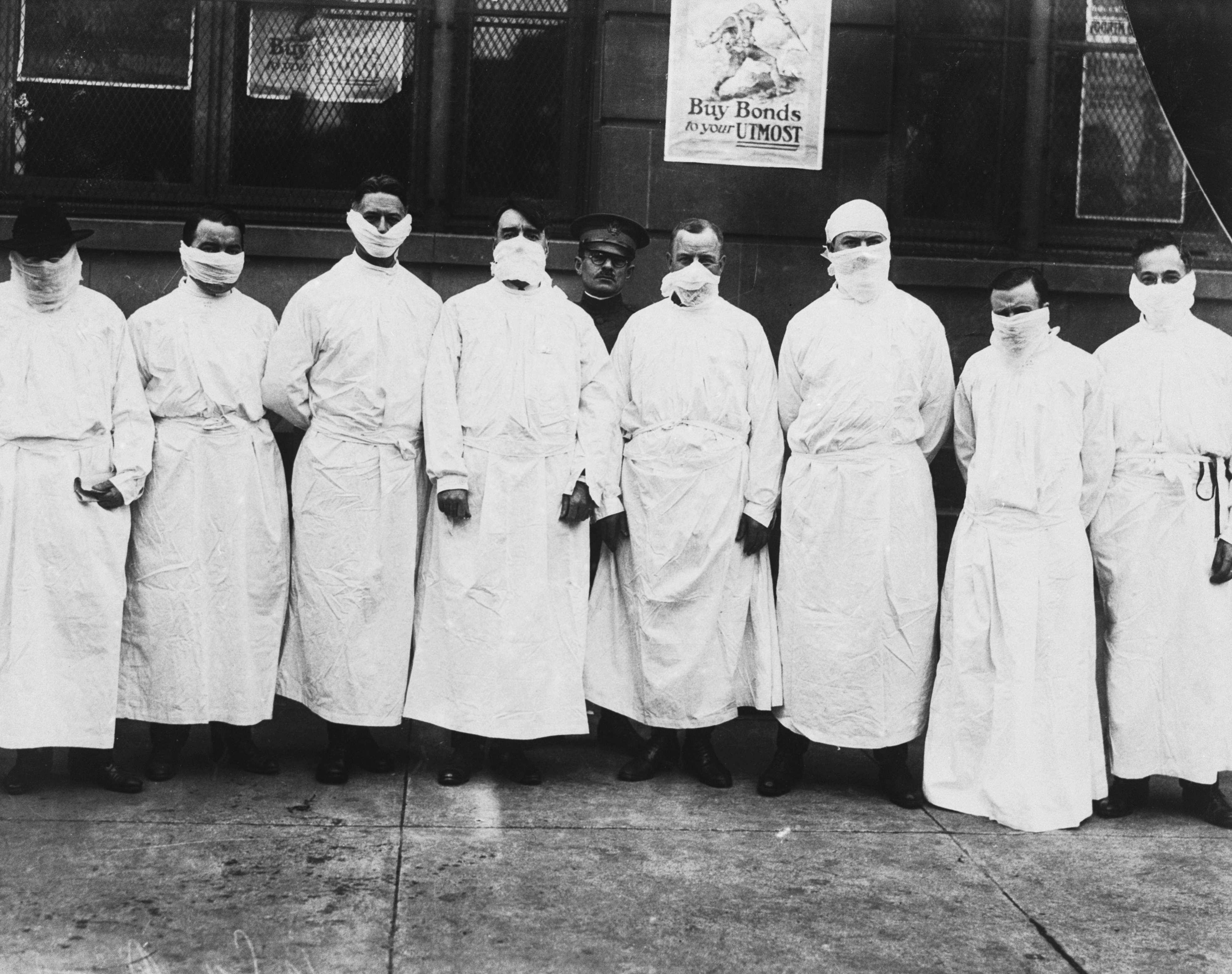Scientists had never seen anything like it. Considered the worst pandemic in history, the Spanish flu started in 1917 and, in less than two years, killed approximately 50 million people around the world. Other estimates put the global tally at twice that, but the final number won’t ever be known because the doctors, nurses and coroners who normally recorded fatalities were either overworked to the point of exhaustion or dead themselves.
Even with travel restrictions and quarantines in place, the disease spread quickly to the most remote corners of the world. In November 1918, the Spanish flu reached a tiny outpost in Alaska called Brevig Mission and killed 72 residents within five days, leaving alive only eight children and teenagers.
In August 1997, a scientist named Johan Hultin from San Francisco traveled to Brevig Mission and, with permission of the town’s elders, excavated the local cemetery to try and unearth a victim of the outbreak buried deep within the frozen tundra. He hoped to extract a sample of human tissue that contained a hibernating specimen of the 1918 flu virus. On August 23, Hultin found a female body seven feet down that was remarkably well preserved.
“I sat on a pail—turned upside down—and looked at her,” Hultin recalled in Gina Kolata’s 2001 book Flu.
She was an obese woman; she had fat in her skin and around her organs and that served as a protection from the occasional short-term thawing of permafrost. Those on the other side of her were not obese and they had decayed. I sat on the pail and saw this woman in a state of good preservation. And I knew that this was where the virus [sample] has got to come from, shedding light on the mysteries of 1918.
With an autopsy knife, Hultin sliced out most of her lungs and immersed the sections in a chemical solution. Then he and his crew carefully reburied the woman he’d named Lucy.
Once he returned to San Francisco, Hultin sent the samples to Dr. Jeffery Taubenberger at the Armed Forces Institute of Pathology in Washington, D.C. Taubenberger was able to decode the virus’ entire genetic sequence, a historic achievement in itself. Later, Taubenberger and his team reconstructed the Spanish flu’s complete gene sequence and in 2005 successfully re-grew the virus, a feat never before accomplished with an extinct disease. That raised obvious ethical and security issues, since the virus—which is 25 times more deadly than the regular seasonal flu—could conceivably be used as a biological weapon or accidentally released. But Taubenberger believed the benefits of studying the live virus outweighed the dangers.
“It’s clear that the 1918 virus remains particularly lethal,” Taubenberger said after bringing about its Lazarus-like resurrection, “and determining whether pandemic influenza virus strains can emerge via different pathways will affect the scope and focus of surveillance and prevention efforts.”
Deciphering how a particular virus operates opens up insights into other viral strains and reveals how they grow, mutate, jump from animal to animal, and attack their hosts. Research based on Lucy’s lung tissue has already led to improved flu vaccines that have prevented larger epidemics, and, ideally, someday scientists will build on Hultin and Taubenberger’s work to uncover a genetic Achilles heel in one strain that makes it possible to wipe out all of them.
As for Hultin, he left something behind for the residents of Brevig Mission in 1997. Two white wooden crosses that once marked the cemetery’s perimeter had rotted away to almost nothing. Before rushing back to San Francisco, the 72-year-old scientist constructed two new crosses, which he mounted where the originals had stood. They were his tribute to the dead and his thank-you to the community that had shown him such hospitality—and given so much to medical science.
Originally published in the October 2013 issue of American History. To subscribe, click here.





